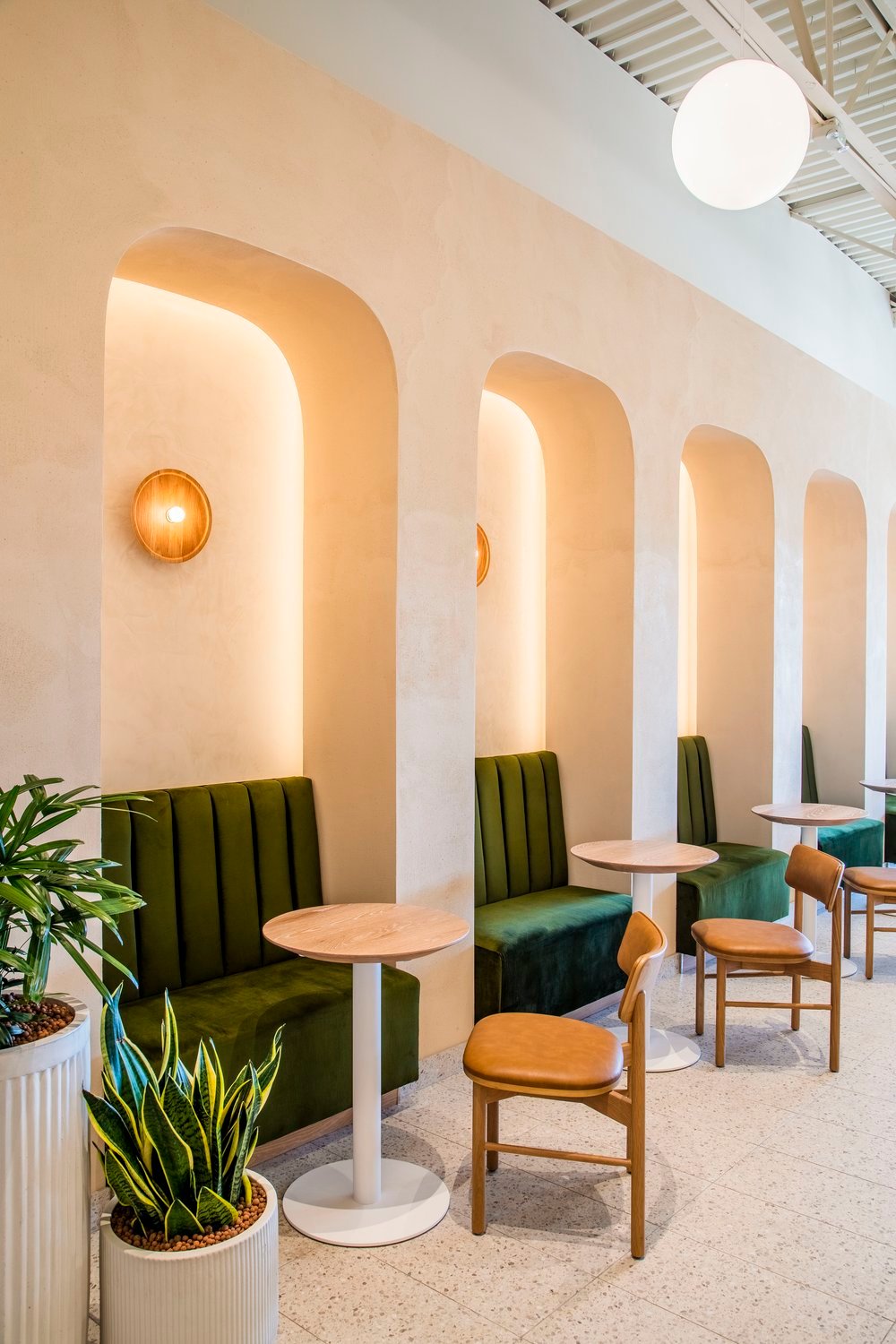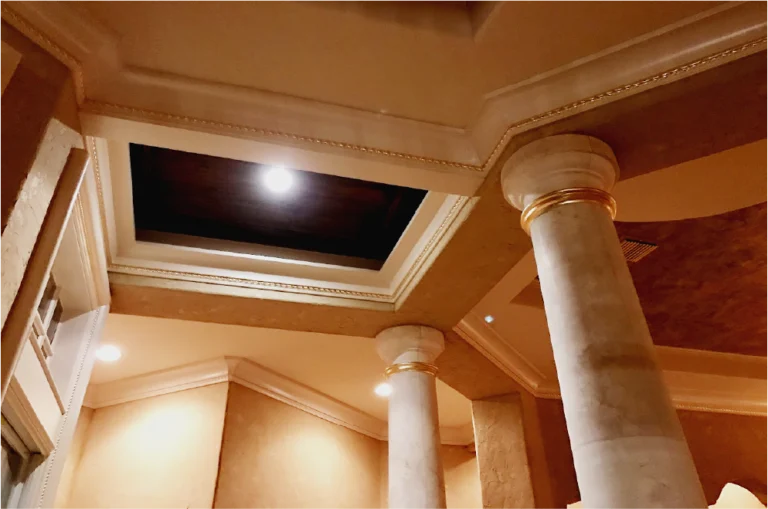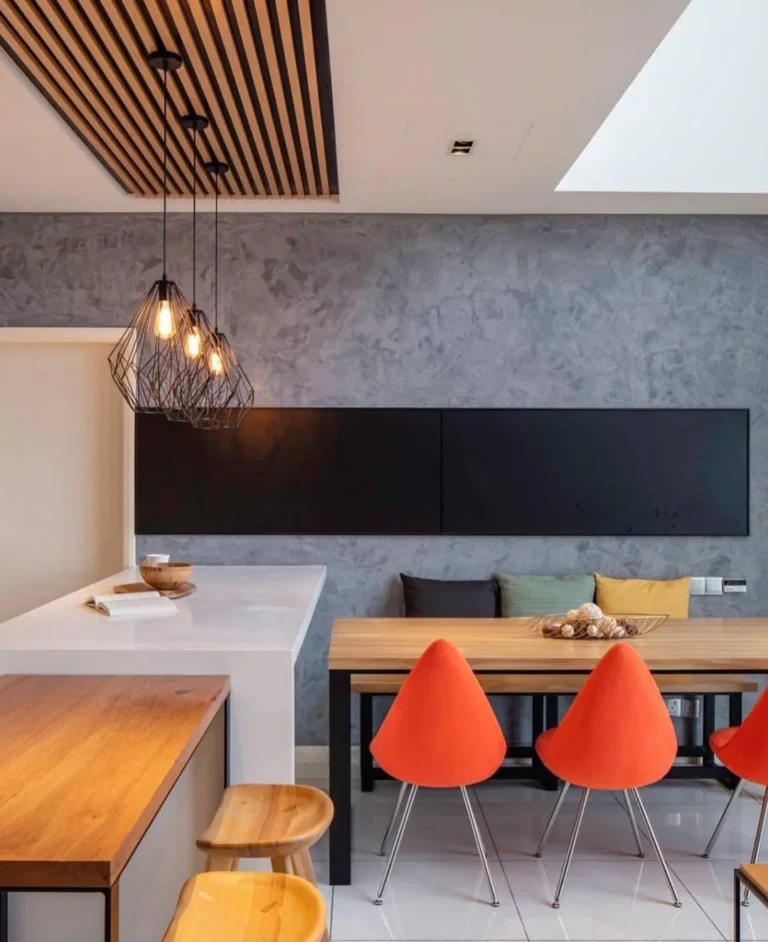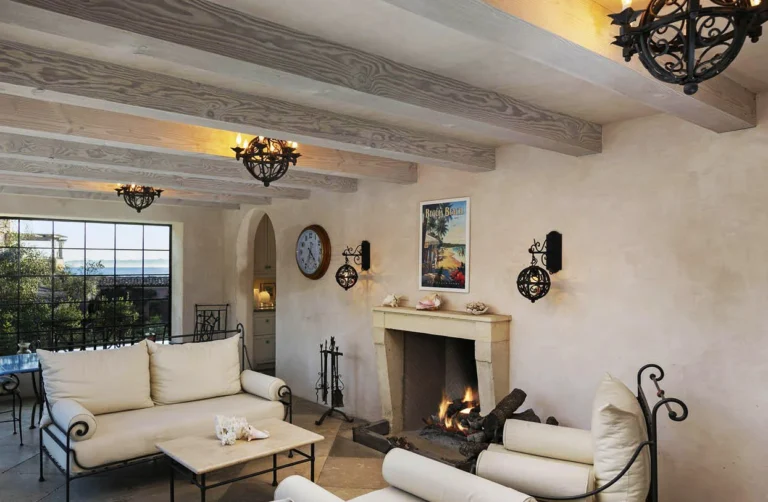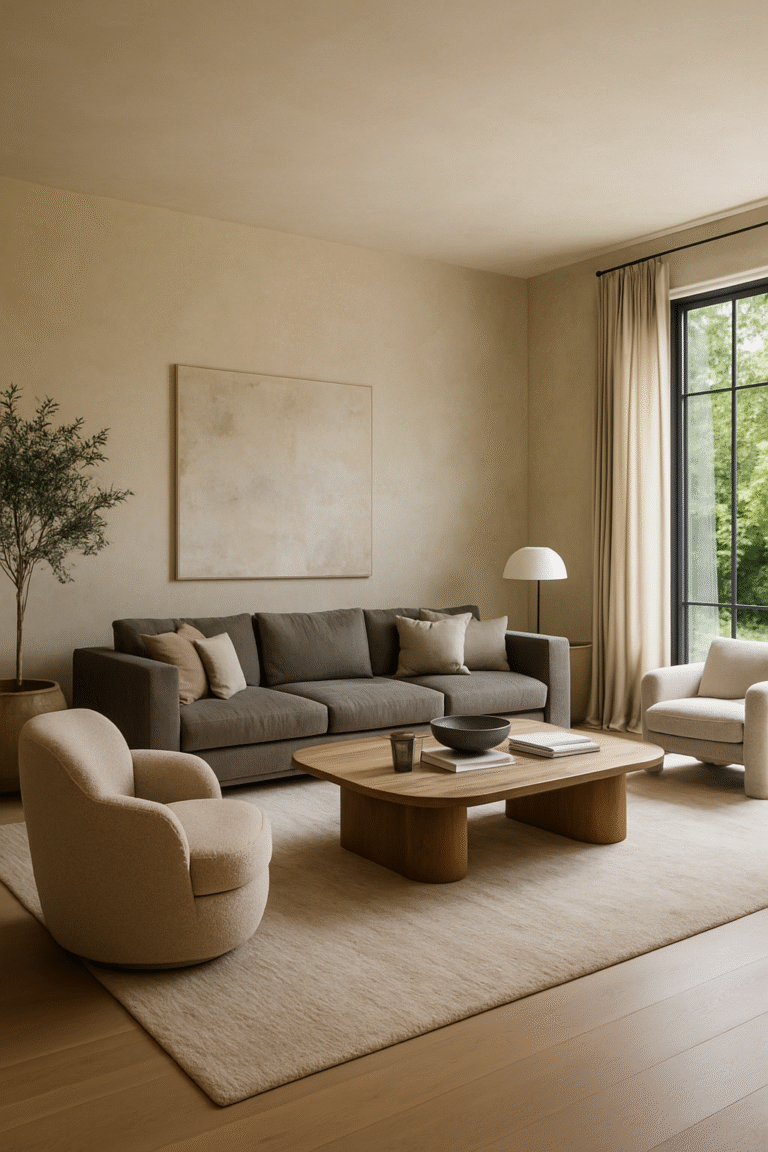9 Key Differences: Marmorino vs Non-Polished Veneziano
“What’s the difference between Marmorino and Non-Polished Veneziano?”
It’s a question I hear often from clients, and for good reason. In photos, these two plaster finishes can appear quite similar. But when experienced in person, the differences in texture, movement, and depth become unmistakable.
Not long ago, we shared a broader overview comparing Marmorino vs Venetian plaster. If you’re beginning to explore decorative wall finishes, that guide is a helpful starting point:
Marmorino Plaster vs Venetian Plaster: A Complete Guide to Key Differences
This article takes the conversation a step further. Here we’re narrowing in on two finishes that often spark the most curiosity, Marmorino vs Non-Polished Veneziano. Both are beautiful, timeless, and lime-based, but each offers its own character.
This guide is designed to help you clearly understand the difference so you can make the right decision for your project. Let’s get started!
A Quick Comparison: Marmorino vs Non-Polished Veneziano
| Feature | Marmorino | Non-Polished Veneziano |
| Base Material | Lime putty + marble sand | Lime putty with ultra-fine marble flour |
| Texture | Subtly textured, velvety | Smooth, matte, nearly flat |
| Sheen | Soft, natural sheen | Low to no sheen (matte) |
| Application Thickness | Thicker build due to larger aggregate | Thin, multiple micro-layers |
| Durability | Excellent; slightly more impact-resistant | Great, but best in low-contact areas |
| Visual Character | Natural movement, mineral depth | Minimal, refined, uniform |
| Ideal Styles | Mediterranean, organic modern, rustic | Minimalist, contemporary, transitional |
| Tactile Feel | Gritty, earthy, touchable | Soft, suede-like, velvety |
| Best Used In | Feature walls, bathrooms, exteriors (lime-safe) | Modern interiors, art walls, ceilings |
Let’s Start With Marmorino Plaster
Marmorino is one of the oldest and most trusted Venetian finishes, known for its depth, texture, and mineral character. It contains marble dust or crushed stone (called aggregate), which adds body and a subtle grit to the material.
This heavier composition gives Marmorino a natural, organic movement, almost like cut limestone or travertine, especially when applied with a skilled hand.
“The main difference is that Marmorino has a heavier sand, also known as aggregate,” explains James Frederick, lead artisan at Artesano Craftsmen. “That makes the material thicker on the wall and gives it a surface texture visible from further away. The added sand creates more movement, makes it more porous, and gives the wall a tactile quality you can feel and see.”
This makes Marmorino especially effective in settings where walls need to be present and where texture and shadow play are part of the design story. And as Maxina Decor has previously mentioned, “It suits well to relatively small baby rooms as well as giant halls of restaurants in every style”
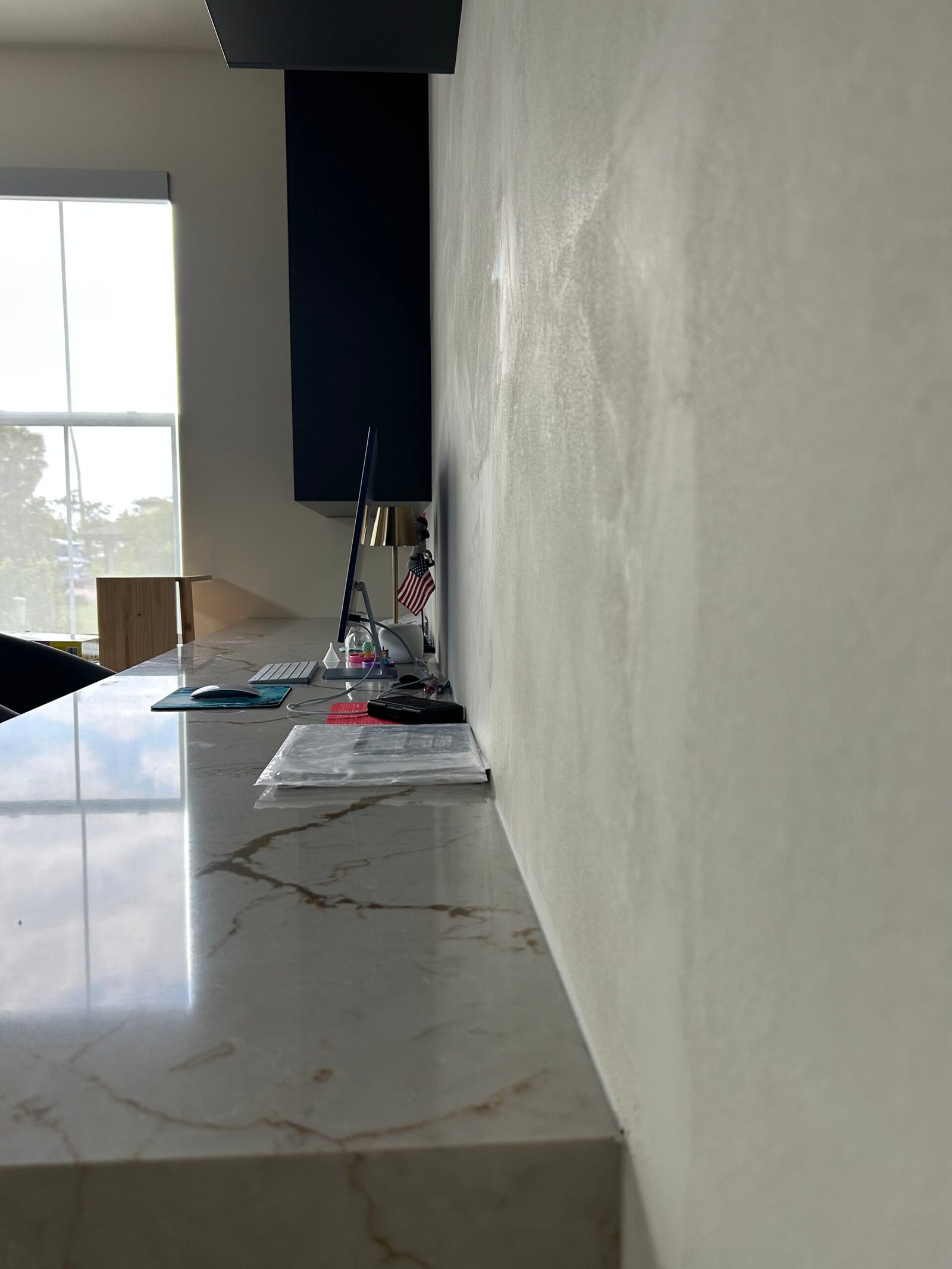
Then There’s Non-Polished Veneziano
While the term Veneziano often brings to mind mirror-like, high-polish walls, there’s another side to it: non-polished Veneziano. It’s the same ultra-fine lime plaster base, but instead of burnishing it to a gloss, we leave it matte.
As we often explain to clients, “Veneziano uses an extremely fine, soft sugar-like sand. At first, it almost resembles drywall compound, until it begins to shine.”
When left unpolished, Veneziano becomes a soft, matte finish that feels like velvet under the fingertips, bringing quiet sophistication to the space.
Its smooth, uniform surface makes it an excellent choice for a wide range of interiors, from modern and transitional homes to warm, layered spaces where texture plays a supporting role rather than taking center stage.
Because it lacks the heavier aggregates of Marmorino, it doesn’t have that mineral grit. Still, it offers something else: a buttery-smooth surface that whispers sophistication.
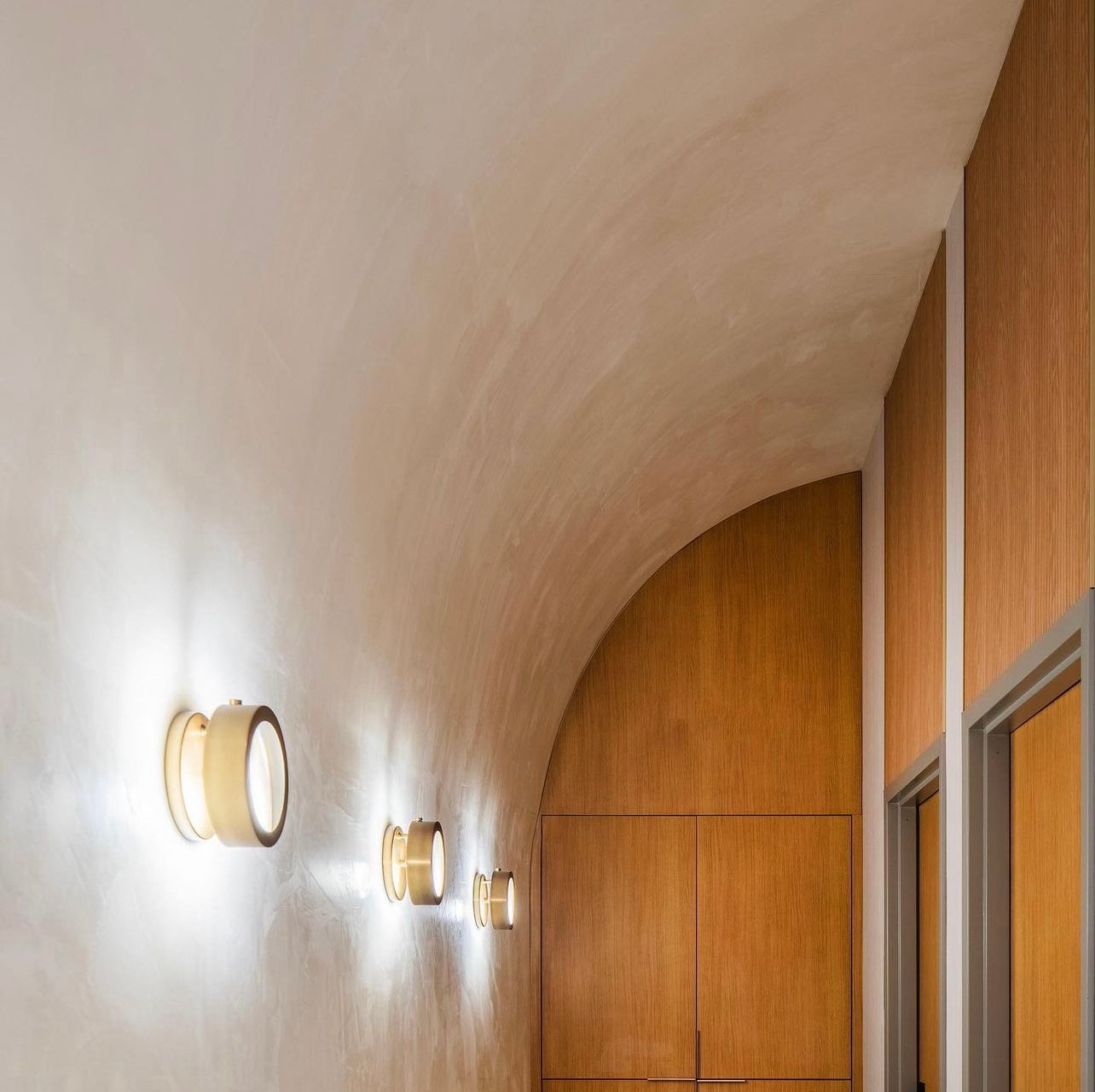
Which Should You Choose?
It depends on what your space asks for and what you want your walls to say.
Choose Marmorino if:
- You want walls with movement, character, and natural variation
- Your design leans Mediterranean, organic modern, or rustic luxury
- Texture is as important as color in your aesthetic
- You’re finishing a bathroom, powder room, or other high-moisture space
Choose Non-Polished Veneziano if:
- You prefer a smooth, subtle, modern surface
- You’re creating a minimalist or transitional look
- You want soft elegance without visual distraction
- Your goal is calm, balance, and clean lines
Why This Choice Matters
For those of us who appreciate the details, the difference between Marmorino and non-polished Veneziano isn’t just cosmetic; it’s architectural. The way light interacts with each other, how they feel under the hand, and how they age matter.
Suppose you’re investing in custom plaster finishes. In that case, it’s not just about color or texture—it’s about harmony with your lifestyle, values, and the story you want your home to tell.
Final Thoughts
When working with lime plaster, no two finishes are ever exactly alike, and that’s the beauty of it.
These materials are alive. They breathe, shift with the light, and age beautifully. When applied with intention, both Marmorino and Veneziano can become permanent works of art in your home, not just decoration but a reflection of your taste and values.
If you’re in Central Florida—Clermont, Windermere, Winter Garden, and considering one of these finishes, we’d love to hear about your vision. Schedule your call today, and let’s explore how these finishes can elevate your home with intention and artistry.
FAQ
What’s the main difference between Marmorino and non-polished Veneziano?
Marmorino contains a heavier marble aggregate, giving it more texture, depth, and durability. Non-polished Veneziano uses ultra-fine marble flour, resulting in a smooth, matte, velvety surface. Both are lime-based but offer distinct visual and tactile qualities.
Which finish is better for high-humidity areas like bathrooms?
Marmorino typically performs better in damp spaces due to its thickness and breathability. That said, both finishes can be used in bathrooms when properly sealed and maintained.
Is it easy to tell the difference between the two in photos?
Not always. Online images often flatten texture and movement, making it hard to see the real difference. We always recommend viewing samples in person under your own lighting conditions.
Can I get a sample before committing?
Yes, custom sample boards are available for a fee. They’re a great way to see the finish up close and decide which one best fits your space.
Can I choose any color for these finishes?
Yes. Both Marmorino and Veneziano can be tinted to a wide range of natural hues. We work with you to match tones that complement your interior palette.
